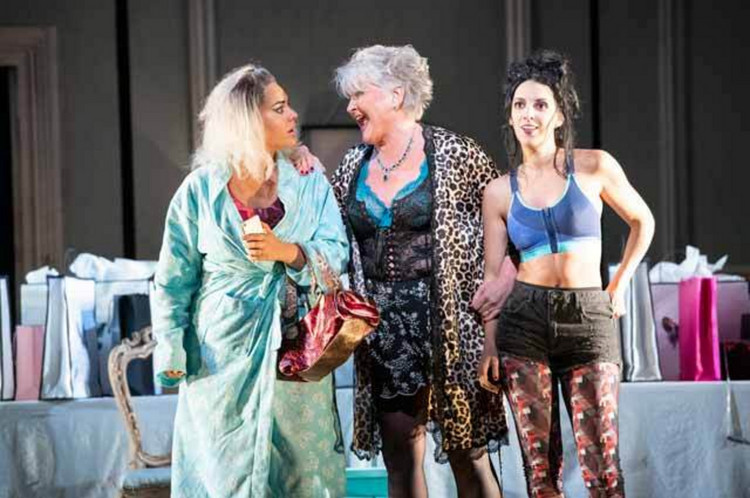Arts > Theatre
Glyndebourne Cinderella comes to Norwich
Norwich Theatre Royal
15/11/18

Glyndebourne truly brought Cinderella to the ball last night at Norwich's Theatre Royal. It may not have been the Belle Époque affair that Jules Massenet envisaged when he originally set Henri Cain's libretto, based on Perrault's 1698 version of the Cinderella fairy tale, to music back in 1899, but Fiona Shaw's production, created especially for Glyndebourne Touring, preserves its charm and beauty whilst updating the formula for a 21st century audience.
The story is familiar to us all, a tale of unjust oppression and triumphant reward, bringing two lovers together with a dusting of magic from a fairy godmother. However, Massenet introduces a surreal dream sequence in which, after the ball, Cinderella and Prince Charming find each other in a forest, and appear to consummate their love. She is subsequently found, close to death, by her Father, who pledges to take her away from the evil stepmother and her daughters and move to a farm far, far away. As we know, the Prince has his own ideas and reaches Cinderella in time with the slipper, paving the way for the happy ending with which we are acquainted.
Massenet specified that the part of Prince Charming be played en travestie, enabling Glyndebourne to bring together two of France's leading mezzo-sopranos for this tour, Alix Le Saux and Eléonore Pancrazi, singing the parts of Cinderella and the Prince. Unfortunately, Le Saux had fallen foul of a throat infection tonight, so soprano Jennifer Witton (who normally plays the part of third spirit) stepped faultlessly into Cinderella's shoes (or should I say glass slippers?). In so doing she certainly earned, and deserved, the biggest round of applause from tonight's Norwich audience.
Pancrazi is wonderful as Prince Charming, and her parallel appearance as a maid and confidante to Cinderella in Pandolfe's household suggests a dimension of gender fluidity, adding yet another layer of duality, metamorphosis and contrast to the production. Butterfly motifs, representing freedom, abound; carbon ash and cinders contrast against the hard reflective gleam of diamonds in four enormous mirrored frames that feature in Jon Bausor's striking set design. These giant mirrored prisms rotate to produce kaleidoscopic effects throughout, and even come together at the ball to create an LCD digital clock display for the countdown to midnight.
The fairy godmother is played with a magical 'Made In Chelsea' matriarchy by Caroline Wettergreen, whose voice is an absolute delight – light as a feather yet as clear as the finest crystal. Agnes Zwierko (Madame de la Haltière) and her two daughters, Noémie and Dorothée (played by Eduarda Melo and Kezia Bienek) are dressed in a neon clash of Lycra, lepoard-print and Agent Provocateur that resembles a haul purchased by the cast of Towie at the Braintree Outlet Centre, but the effect is convivially comedic. William Dazely triumphs in the difficult role of the meek and downtrodden father, Pandolfe.
Duncan Ward conducts the orchestra with a lightness of touch that is entirely sympathetic with Messanet's turn of the century mastery of melody and sparkle.
Fiona Shaw has successfully created a modern-day tale that highlights the contemporary spectres of identity, love and happiness; blurs the boundaries of fantasy and reality; and illustrates the balances between dreams and expectations. She gently introduces elements of comedy without succumbing to pantomime, and preserves a romanticised version of love without over-sugaring the pill. If Jules Massenet could have been in the audience last night, I think he would have loved it.